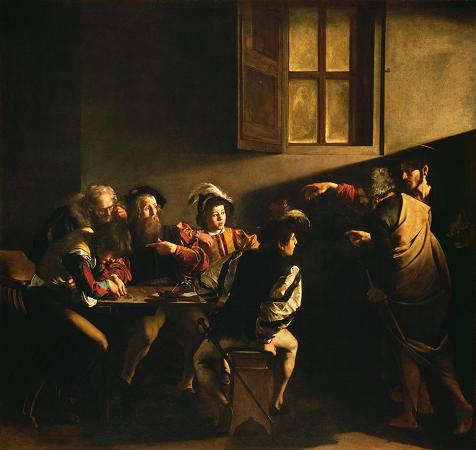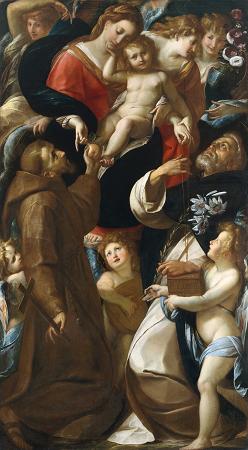Baroque Artist. The Baroque is a highly ornate and often extravagant style of architecture, music, dance, painting, sculpture and other arts that flourished in Europe from the early 17th until the mid-18th century. It followed Renaissance art and Mannerism and preceded the Rococo and Neoclassical styles. It was encouraged by the Catholic Church as a means to counter the simplicity and austerity of Protestant architecture, art and music, though Lutheran Baroque art developed in parts of Europe as well. The Baroque style used contrast, movement, exuberant detail, deep colour, grandeur and surprise to achieve a sense of awe. The style began at the start of the 17th century in Rome, then spread rapidly to France, northern Italy, Spain and Portugal, then to Austria and southern Germany. By the 1730s, it had evolved into an even more flamboyant style, called rocaille or Rococo, which appeared in France and Central Europe until the mid to late 18th century. The English word baroque comes directly from the French, and may have been adapted from the Portuguese term barroco, a flawed pearl. Both words are also related to the Spanish term berruca or barrueco. The term did not originally describe a style of music or art. Prior to the 18th century, the French baroque and Portuguese barroco were terms exclusively related to jewellery. An example from 1531 uses the term to describe pearls in an inventory of Charles V's treasures. Later, the word appears in a 1694 edition of Le Dictionnaire de l'Académie Française, which describes baroque as only used for pearls that are imperfectly round. A 1728 Portuguese dictionary similarly describes barroco as relating to a coarse and uneven pearl. The French term for the artistic style may also have had roots in the medieval Latin word baroco, a philosophical term which was invented in the 13th century by scholastics to describe a particularly complicated type of syllogism, or logical argument. In the 16th century the philosopher Michel de Montaigne associated the term 'baroco' with Bizarre and uselessly complicated. In the 18th century, the term was also used to describe music, and was not flattering. In an anonymous satirical review of the première of Jean-Philippe Rameau's Hippolyte et Aricie in October 1733, which was printed in the Mercure de France in May 1734, the critic wrote that the novelty in this opera was du barocque, complaining that the music lacked coherent melody, was unsparing with dissonances, constantly changed key and meter, and speedily ran through every compositional device. In 1762, Le Dictionnaire de l'Académie Française wrote that the term could be used figuratively to describe something irregular, bizarre or unequal. Jean-Jacques Rousseau, who was a musician and composer as well as philosopher, wrote in 1768 in the Encyclopédie: Baroque music is that in which the harmony is confused, and loaded with modulations and dissonances. The singing is harsh and unnatural, the intonation difficult, and the movement limited. It appears that term comes from the word 'baroco' used by logicians. In 1788, the term was defined by Quatremère de Quincy in the Encyclopédie Méthodique as an architectural style that is highly adorned and tormented. The terms style baroque and musique baroque appeared in Le Dictionnaire de l'Académie Française in 1835. By the mid-19th century, art critics and historians had adopted the term as a way to ridicule post-Renaissance art. This was the sense of the word as used in 1855 by the leading art historian Jacob Burkhardt, who wrote that baroque artists despised and abused detail because they lacked respect for tradition. Alternatively, a derivation from the name of the Italian painter Federico Barocci has been suggested. In 1888, the art historian Heinrich Wölfflin published the first serious academic work on the style, Renaissance und Barock, which described the differences between the painting, sculpture, and architecture of the Renaissance and the Baroque. Main article: Baroque architecture The Baroque style of architecture was a result of doctrines adopted by the Catholic Church at the Council of Trent in 1545-63, in response to the Protestant Reformation. The first phase of the Counter-Reformation had imposed a severe, academic style on religious architecture, which had appealed to intellectuals but not the mass of churchgoers. The Council of Trent decided instead to appeal to a more popular audience, and declared that the arts should communicate religious themes with direct and emotional involvement.
more...














